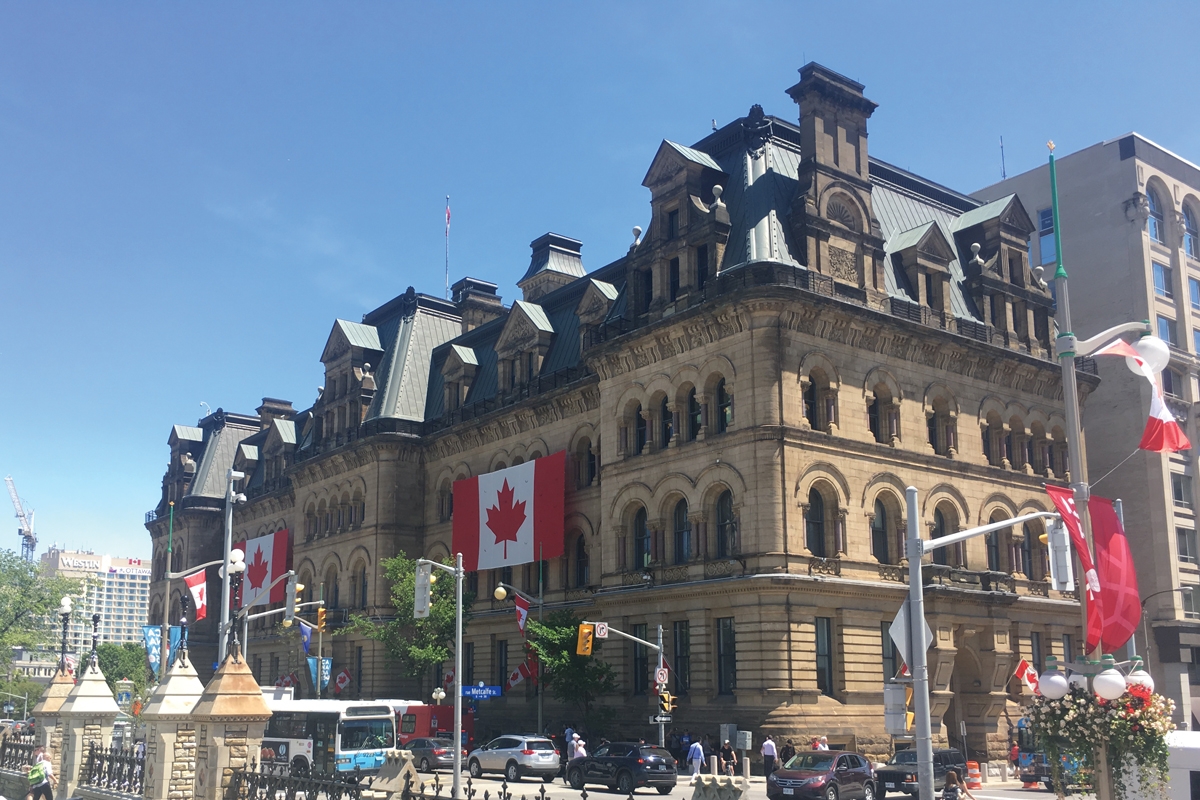
The Langevin Block
The imposing sandstone structure on Wellington facing the Hill and the War Memorial has quite a story.
The Langevin Block has morphed from being the first building outside the Hill to house a growing civil service into a symbol of the power and influence of the Prime Minister’s Office which it has housed since the Pearson era.
It was hardly a centre of power when it opened in 1889. Canada’s famous early poet Archibald Lampman, then a lowly clerk, complained: “We are all crammed together like sardines,” with 13 or more drudges in spaces meant for eight.
No longer — roomy offices with spectacular views for well-paid PMO staff replaced dingy work rooms.
In Pierre Trudeau’s time, numbers of PMO staffers ballooned reaching more than 100. Prime Minister Harper was rumoured to have more than 130 staffers.
Early criticism from ministers and MP’s for the PMO’s controlling strategies first afflicted Marc Lalonde, Trudeau’s first principal secretary.
The ineffable Jim Coutts replaced him in 1975 reducing the PMO to 90.
He did away with many of the annoying regional political overseers who so distressed elected politicians. Nevertheless, griping about the power of the unelected in the Langevin continued.
That’s when I came aboard as assistant press secretary, and first walked the hallowed halls of the Langevin.
Later, after Trudeau’s comeback in 1980, in a further reduced PMO under Tom Axworthy, I finally won the press secretary’s magnificent office on the first floor, its 12-foot-high windows facing the Hill.
Despite Trudeau’s disrespect for the press gallery, I had it relatively easy.
I worked with the Federal Provincial Relations Office under Mike Kirby.
The Langevin was the scene of endless strategy discussions about getting the provinces onside for the constitutional conferences, which ended in repatria-tion with a Charter of Rights and Freedoms.
Heady times, and scribes and TV reporters were happily engaged. No talk of “message control” needed.
I did make fruitless attempts at gathering media members from minister’s offices to co-ordinate messages. But it was ineffective compared to the more rigorous approach Peter Donolo took when directing communications under Prime Minister Chretien.
It was under Chretien that the influence of the PMO started to be severely criticized. In 2001, the influential Globe columnist Jeffrey Simpson penned The Friendly Dictatorship which harshly criticized the one-man rule of Chretien and the ever more numerous and powerful PMO.
Much later, the PMO’s role was defended in one of the few readable books by a former PMO heavyweight, Chretien’s long-time confidante and Director of Policy, Eddie Goldenberg.
In The Way it Works (2006) he points out that the prime minister is the CEO of the largest and most complex corporation in the country, has huge responsibilities and needs strong staff support to carry them out.
This hardly is a defence for the frightening rigour with which Prime Minister Harper and his “boys in short pants” in the Langevin controlled every aspect of government. Harper’s people took message control to new heights, the PMO vetting every public statement by every elected official, and muzzling civil servants to a degree never before experienced in Ottawa.
Certainly, under the young Trudeau, the Langevin is much less feared by civil servants. Scientists and data collectors in Stats Canada, experts in environment, can again talk to the media, as can global affairs officials and ambassadors.
Nevertheless, the new PMO under Principal Secretary Gerald Butts makes sure ministers are “on message” — with relative success. But there are still few rumblings about an all-powerful PMO. Perhaps he and his colleagues are good listeners.
I returned to the Langevin recently. I was ushered through high security glass doors to the holy of holies and saw my old office — now the action centre of “operations,” whatever that is.
The high halls were silent – huge doors closed.
Memories flooded back.
I thought: if this historic edifice could only talk.
* THE LANGEVIN BLOCK WILL SOON BE RENAMED.









